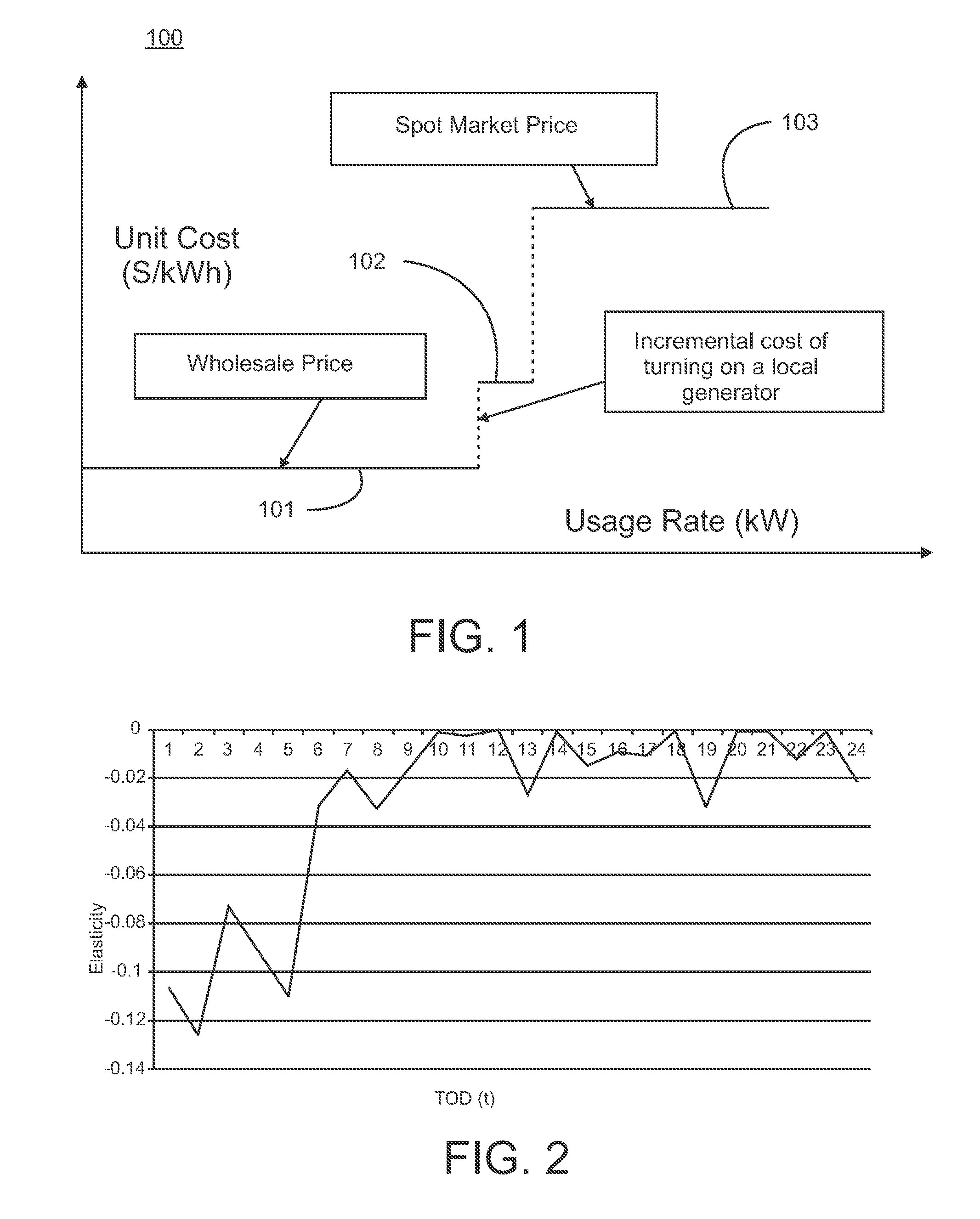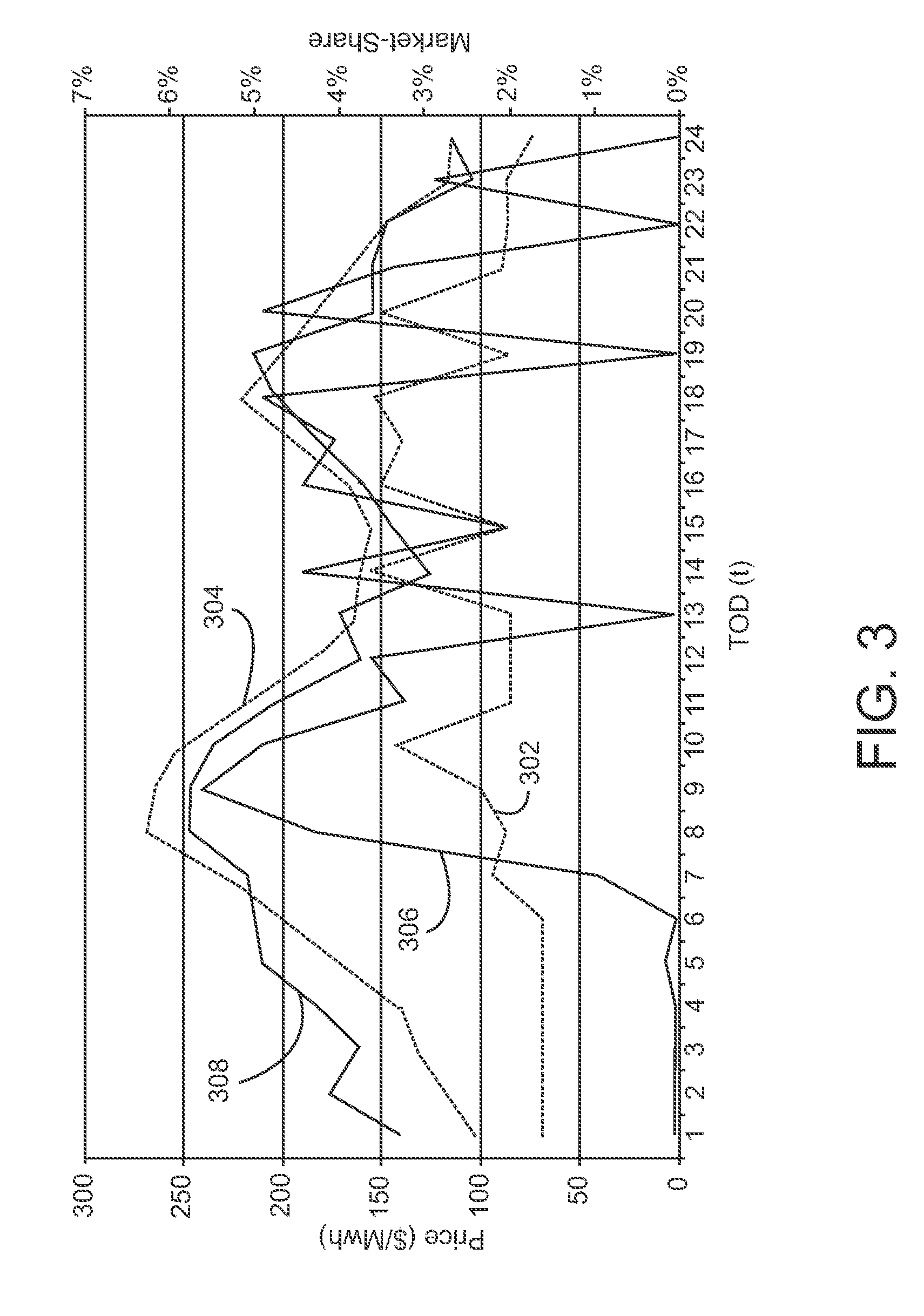Managing Time-Substitutable Electricity Usage using Dynamic Controls
a dynamic control and electricity usage technology, applied in adaptive control, program control, instruments, etc., can solve the problems of mnl model, adversely affecting the quality of prediction, and prior approaches to short-term forecasting have typically neglected the intra-day substitutability of residential usage, etc., to maximize profitability, minimize variance, and maximize profitability
- Summary
- Abstract
- Description
- Claims
- Application Information
AI Technical Summary
Benefits of technology
Problems solved by technology
Method used
Image
Examples
Embodiment Construction
[0020]A utility company or an independent system operator (ISO) periodically adjusts its day-ahead pricing (incentive) plan for a group of residential customers based on the latest available forecast for intra-day and total daily usage or load. Given a baseline plan, a first goal takes into account the customer response to time-of-day price incentives and adjusts these incentive values within a pre-defined neighborhood of the baseline price to minimize the deviation of the predicted day-ahead load profile from a desired profile. An overview of a customer-choice prediction based model for intra-day load optimization uses the following notation. T is the number of time periods in a day, where each period will be referred to as a time of day (TOD) interval. M is the number of steps in the price ladder, while pt is the recommended price per unit of electricity usage for TOD t (primary decision variables). The variable pt0 is the baseline unit price of electricity for TOD t, and the vari...
PUM
 Login to View More
Login to View More Abstract
Description
Claims
Application Information
 Login to View More
Login to View More - R&D
- Intellectual Property
- Life Sciences
- Materials
- Tech Scout
- Unparalleled Data Quality
- Higher Quality Content
- 60% Fewer Hallucinations
Browse by: Latest US Patents, China's latest patents, Technical Efficacy Thesaurus, Application Domain, Technology Topic, Popular Technical Reports.
© 2025 PatSnap. All rights reserved.Legal|Privacy policy|Modern Slavery Act Transparency Statement|Sitemap|About US| Contact US: help@patsnap.com



